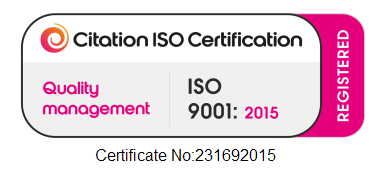Sectors and Regions
Nearshore Construction
Underwater noise from nearshore construction, generated from activities such as pile driving (impact, vibro etc.), dredging, drilling and associated vessel operations generates high-intensity, low-frequency sound waves that propagate efficiently through water, often within confined spaces such as rivers, harbours, or ports. Whilst the magnitude of the noise may be lower than that generated by larger offshore equipment, these noise sources can cause disturbance and physiological harm to marine species. Understanding and managing underwater noise is essential for balancing infrastructure development with the protection of sensitive marine ecosystems and biodiversity near construction zones.
Clients and/or Projects: Botley Bypass (Hampshire County Council), Port of Dundee (Haskoning), Corran Ferry Development (Affric), River Mersey Drilling Assessment (Red7Marine), Pedestrial and Cycle Bridge - Cardiff (Arcadis), CMDC 3 - Canary Wharf Terminal (Uber Boats), Temasek Harbour - Singapore (Boskalis), Southampton Western Docks Dredging (ABP)
Offshore Wind
Offshore windfarm construction, especially pile driving, produces high-intensity, low-frequency impulsive noise. This sound propagates efficiently underwater, and, if taking place in open water, this noise can affect marine life upto tens and sometimes hundreds of kilometers away. Mitigation includes time-area restrictions and bubble curtains.
Clients and/or Projects: Doggerbank C OWF Monitoring (Doggerbank), JNCC Piling Guidance (JNCC), EA Hub OWF (GoBe), Inchcape OWF (Inch Cape), Hornsea OWF
Offshore Construction
Offshore construction activities like UXO clearance generate intense impulsive underwater noise from explosive detonations. These high-energy shock waves can cause injury or behavioral changes in marine life. Accurate acoustic modelling and mitigation measures, such as exclusion zones and timing restrictions, are essential to minimise ecological impacts.
Clients and/or Projects: EA3 UXO Monitoring (Hughes Subsea), EGL1 UXO assessment (Natural Power), JNCC Explosives Guidance (JNCC), Wellhead Removal - Block 21-03d (Orbis), Subsea Piling at the Kyle Oil Field (Orbis)
Offshore Survey
Offshore surveys, geological/seabed surveys or pipeline surveys, use towed equipment such as sub-bottom profilers (SBPs) that produce repetitive, high-intensity impulsive sounds. The source levels vary per equipment type and power setting, and the frequency of these sources range from low frequency airguns, to very high frequency SBPs. These signals may disrupt marine life over large ranges, depending on the location and extent of the survey, as well as the equipment used. Technical assessment includes source levels, pulse intervals, and sound propagation modeling to guide mitigation.
Clients and/or Projects: SBP Pipeline Survey - Platypus and Neptune (Orbis), Geophysical Survey Equipment Verfication (GeoXYZ)
Defence and Security
Defence-related activities like explosive trials generate extremely high-intensity impulsive underwater noise. The resulting shock waves can cause immediate harm to marine life across large distances.
Clients and/or Projects: High Explosive Airburst Trials
Oil and Gas
Oil and gas exploration uses high-intensity sound sources like airguns or sub-bottom profilers (SBPs). These signals can disturb or harm marine life over vast areas. Understanding acoustic propagation, exposure levels, and cumulative impacts is essential for environmental protection and regulatory compliance during seismic operations and other survey activities.
Consideration of underwater noise is becoming increasingly important for oil and gas exploration projects:
Modelling of noise from seismic surveys for environmental impact assessments
Construction and decommissioning underwater noise modelling
Regulatory advice and support
Long-term campaign monitoring
Sound source verification of survey equipment
Clients and/or Projects: Black Sea Drilling (Blumenfield), VSP Seismic Survey - Shetland (Orbis)
Research
Underwater acoustic research often investigates topics such as the impact of noise on receptors (human and non-human), or the effectiveness of mitigation on receptors. This allows for better understanding of how underwater sound affects marine life, which guides the development of noise mitigation, informs regulations and supports sustainable management of human activities in marine environments.
Clients and/or Projects: Effect of Impact Piling on Swimmers (Dover Port), Dive Helment (JFD), Fish ADD Sound Field Mapping (Fishtech Marine), Impact of underwater noise on commercial divers (OLF)



